Related Research Articles
Mass media in Norway outlines the current state of the press, television, radio, film and cinema, and social media in Norway.
Øvre Smaalenene was a Norwegian newspaper, published in Askim in Østfold county.
Christopher Hansteen was a Norwegian judge. He served as an Associate Justice in the Supreme Court of Norway from 1867 to 1905, an unusually long period, and also spent a few years in politics.
Gunnar Christie Wasberg was a Norwegian historian, philosopher and first librarian at the University of Oslo Library.

Øyvind Anker was a Norwegian librarian.

Jahn Otto Johansen was a Norwegian journalist, newspaper editor, foreign correspondent and non-fiction writer.
Ludvig Stoud Platou was a Danish-Norwegian educator, historical and geographical writer, politician and State Secretary.
Petter Moe-Johansen, usually known as P. Moe-Johansen was a Norwegian newspaper editor and politician for the Labour and Social Democratic Labour parties.

Arvid Gilbert Hansen was a Norwegian newspaper editor and politician for the Labour and Communist parties.
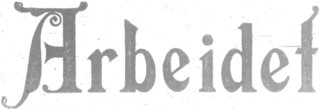
Arbeidet was a Norwegian newspaper, published in Bergen in Hordaland county.

Romsdalsposten was a Norwegian newspaper, published in Kristiansund in Møre og Romsdal.
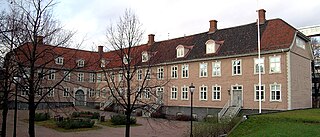
Selskabet for Oslo Byes Vel, often known as Oslo Byes Vel, is a non-profit heritage association for the benefit of Oslo, Norway's capital city. It was established in 1811 by Niels Wulfsberg.

Nils Vogt was a Norwegian journalist and newspaper editor. Born into a family of politicians and civil servants, he became the first chairman of the Norwegian Press Association and the Conservative Press Association. Vogt worked at the conservative newspaper Morgenbladet for 45 years, acting as editor-in-chief from 1894 to 1913. He wrote numerous articles during his lifetime, advocating independence from Sweden and the Riksmål standard of written Norwegian.
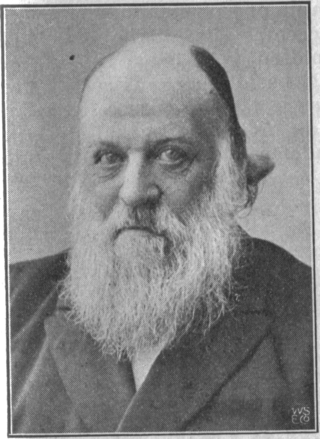
Ludvig Ludvigsen Daae was a Norwegian historian and author. He was a professor at the University of Oslo for more than thirty years.
Axel Christian Zetlitz Sømme was a Norwegian educator, economist and geographer. During the 1920s, he was a political activist, magazine editor and newspaper editor.
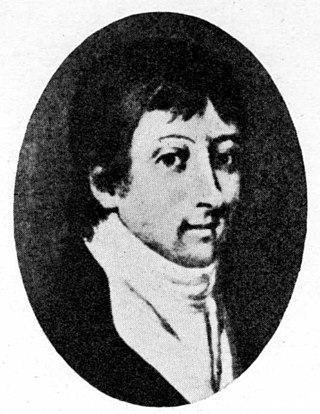
Niels Wulfsberg was a Norwegian priest, newspaper editor and publisher. Born in Tønsberg, the son of a bailiff, he gained little respect as a priest in Christiania, owing to his libidinous lifestyle. He became known as the founding editor of the Morgenbladet and Tiden newspapers, in which he espoused a monarchistic and secessionist stance.
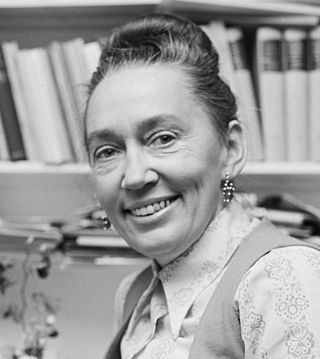
Kari Skjønsberg was a Norwegian academic, writer and feminist.

Maren Caroline Henriette Schønberg Erken was a popular Norwegian cookbook writer and teacher in home economics. One Norwegian newspaper included her in their list of the most important 100 Norwegians in the last 200 years.

Sivert Knudsen Aarflot was a Norwegian figure in popular education. He worked as a schoolteacher in Volda in the Sunnmøre district and then served as a lensmann.

Henriette Wulfsberg was a Norwegian school owner, writer and translator.
References
- 1 2 3 Rune Ottosen, "Niels Wulfsberg," in Norsk biografisk leksikon , ed. Knut Helle, 2nd ed., vol. 10 (Oslo: Kunnskapsforlaget, 2005).
- ↑ Svennik Høyer, Pressen mellom teknologi og samfunn: norske og internasjonale perspektiver på pressehistorien fra Gutenberg til vår tid (Oslo: Universitetsforlaget, 1995), 136.
- ↑ Øystein Idsø Viken, Makt mellom linene: makt og allmente i Noreg 1807–1814, master thesis at the University of Oslo, 2010, 81.
- 1 2 Yngvar Hauge, Morgenbladets historie. Bind I: 1819–1854 (Oslo: Morgenbladets forlag, 1963), 13–15.
- ↑ Henrik Grue Bastiansen and Hans Fredrik Dahl, Norsk mediehistorie (Oslo: Universitetsforlaget, 2008), 79.
- ↑ Høyer, Pressen mellom teknologi og samfunn, 150.